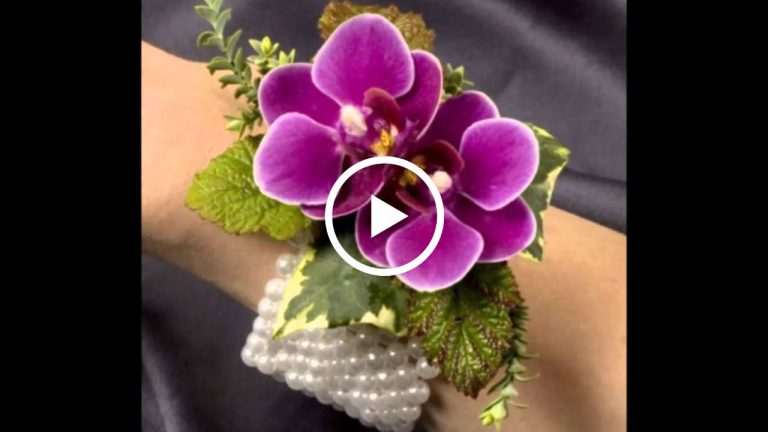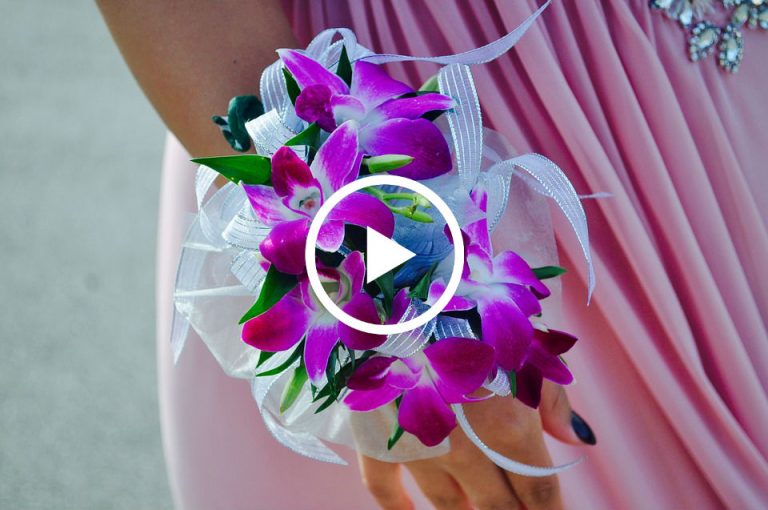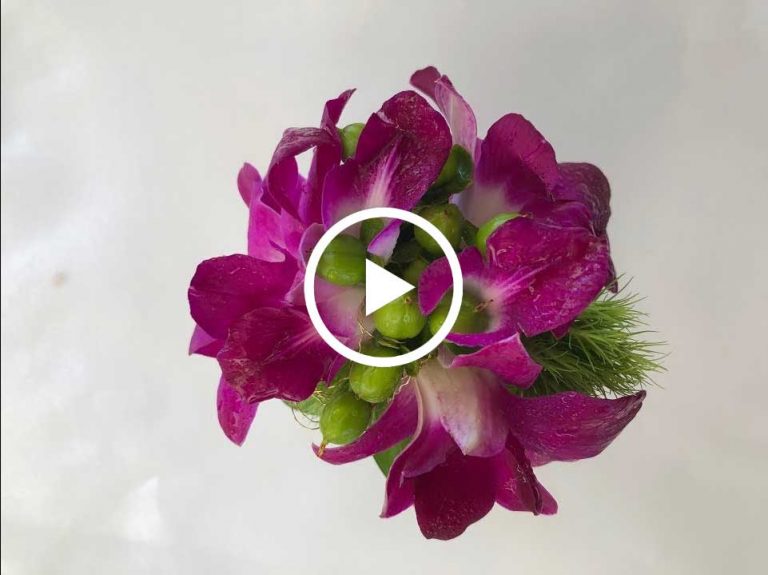Designing the perfect wrist corsage requires careful consideration of flower selection and design principles.
When creating corsages for a wedding or special event, an understanding of which blooms work best can make all the difference in your floral designs.
Many beginners struggle with choosing the right flowers that stay fresh and maintain their shape throughout an event. This guide reveals the most popular and practical flowers for wrist corsages and expert tips for successful designs.
From traditional proms to modern weddings, these flower choices will help you create beautiful, comfortable, and long-lasting wrist corsages that your clients will love.
Design Highlights
- Spray roses remain the top choice for wrist corsages due to their versatility and durability
- Lightweight flowers like spray orchids and ranunculus provide elegant options without causing discomfort
- Cold floral glue offers a simpler alternative to traditional wiring techniques
- Seasonal availability should be considered when planning corsage designs
- Simple designs with fewer flowers typically result in more successful outcomes
Choosing Flowers for a Wrist Corsage – The Factors to Consider
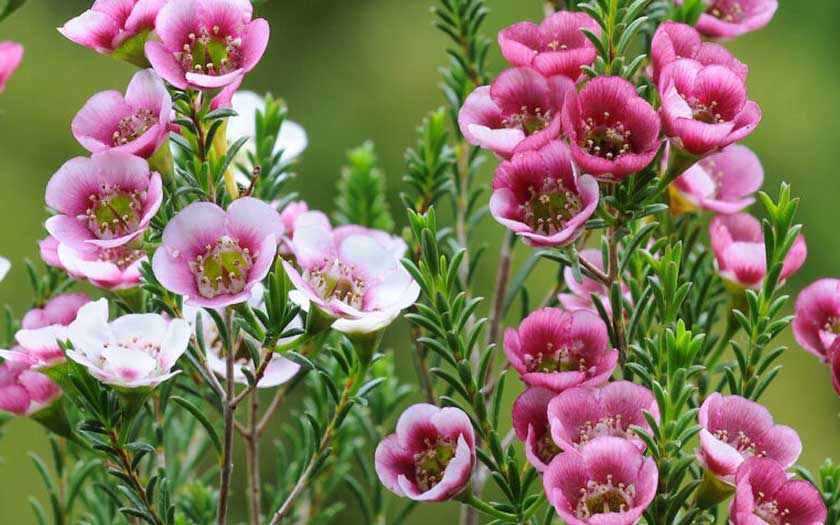
Creating beautiful corsages requires careful consideration of both their use and size. Unlike flowers in a vase, flowers used in a corsage do not have a water source.
Selecting hardy flowers is crucial to ensure your wrist corsage remains fresh throughout the event.
It’s also important to consider the size and weight of the flowers you plan to use. Large blooms may appear awkward or uncomfortable to wear on the wrist. if not properly designed. Heavy blooms can affect the balance of the corsage, causing it to rotate on the wrist, especially when using a small wristlet.
Although these issues may seem daunting to a novice designer, they’re not. Trust me. Cold floral glue has made adding flowers to wrist corsages much easier.
Many flowers that previously needed to be wired and taped can now be easily included by floral designers and DIYers at all skill levels using cold glue.
However, my rule when designing a wrist corsage is to keep it simple. Use fewer, smaller, and lighter-weight flowers to help you avoid problems until you gain more experience.
Wrist Corsage Flowers: A List of Our Favorites
Here are a few of our top flower picks for beautiful and flattering wrist corsages and why we like them.
Spray Roses
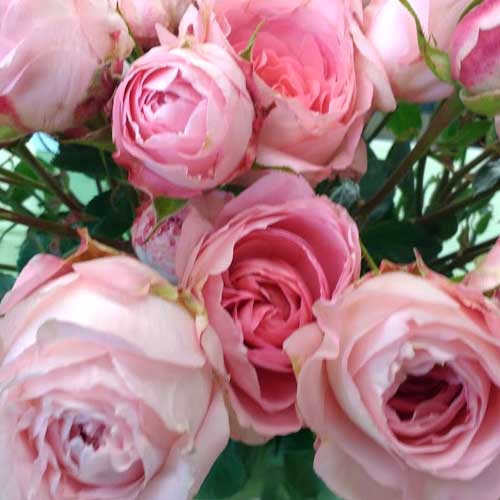
Spray roses are the number one flower we sell for corsages and boutonnieres. They feature multiple flowers on a single stem, resulting in smaller blooms than single-flowered hybrid tea and sweetheart rose varieties.
Spray roses come in shades from light pastels to bold, vibrant colors, providing plenty of color options for you to choose from.
Their smaller head size makes them ideal for a corsage and a cost-effective substitute for sweetheart roses. Their fleshy calyx and strong stem can be easily wired or glued into corsage designs.
Most importantly, spray roses are readily available. They are sold at many retail floral outlets, from flower shops to supermarket floral departments.
If you are looking for a particular color, always order in advance, especially during peak times (April through June), when corsage purchases are the highest.
Spray Orchids

Orchids, like Cattleyas, japhets, and cymbidiums, have long been a classic corsage choice.
While their popularity has waned over the last few decades, spray orchids have become increasingly popular in wrist corsages. It’s easy to see why.
Dendrobiums, Mokara, and phalaenopsis varieties bring an understated elegance to wrist corsages but can also add a dramatic pop of color if needed.
Spray orchids are one of the easiest flowers for designers at all skill levels to work with. They are long-lasting and lightweight, especially when using cold glue.
When designing a prom corsage or boutonniere for a formal occasion, you only need a handful of blooms. If so, you might consider buying a blooming orchid plant and using the flowers from that.
Orchid plants are easy to find. They are sold everywhere, from big-box retailers and grocery stores to your neighborhood flower shop.
Cut orchids usually need to be ordered in advance. It’s a better option if you are designing corsages or boutonnieres for a larger number of people in a wedding party, or if you require a specific flower color or size.
Ranunculus
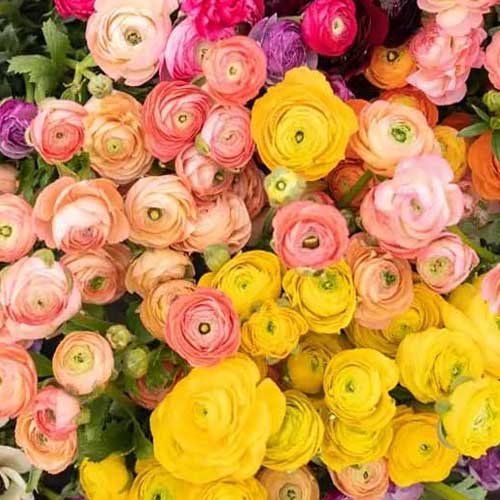
Known for their vibrant colors and numerous layers of delicate petals, Ranunculus are popular flowers for wrist corsages today.
They are available in many colors and bloom sizes, both large and small. Because of their lighter weight, ranunculus of all sizes can be used for wrist corsages when using cold glue and the proper gluing surface.
These beautiful blooms are my favorite choice when making a wrist corsage using a single flower.
Waxflower

I love Waxflower! This flowering shrub is part of the Myrtle family, and its stems are covered in delicate blossoms in shades of pink, white, or lavender.
Its soft, needle-like leaves add an appealing texture. While waxflower is not a focal flower, it’s one of our favorite filler flowers to use in corsages mainly because the colors complement many different color palettes.
Hypericum
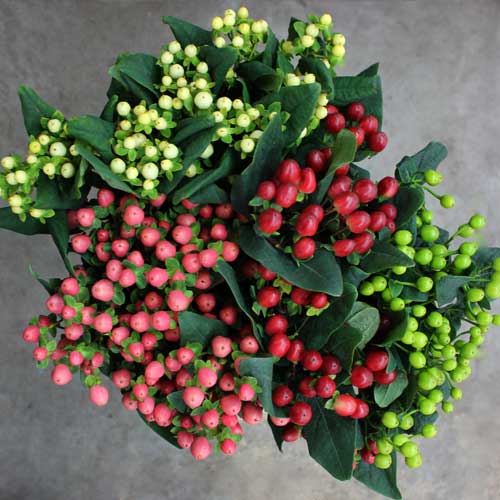
Another one of my favorite filler or accent flowers is hypericum. The berries come in red, pink, ivory, and green shades, blending well with many color themes.
The berries are hearty and long-lasting and easy to add by gluing. They are also easy to find at most retail floral outlets, either by the stem, in consumer bunches, or included in mixed bouquets.
Button and Micro Poms
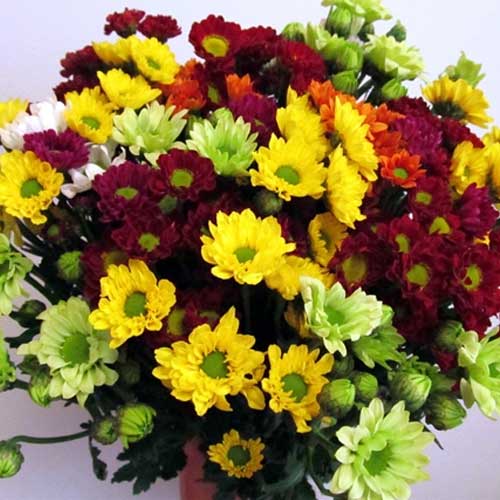
These micro daisy chrysanthemums are perfect for corsages and boutonnieres, with the flowers usually measuring an inch or less.
Button poms are slightly larger and consist of densely packed petals, forming a round or ball-like shape.
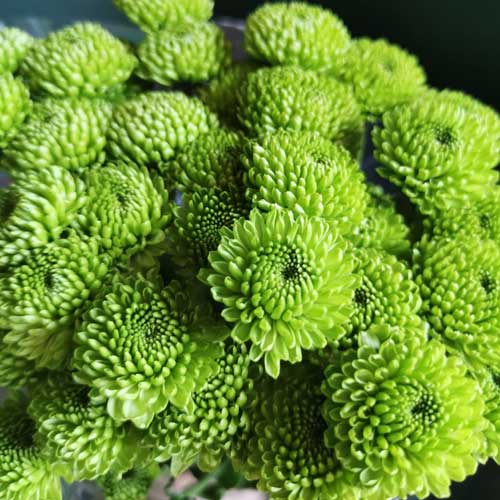
Both of these varieties, the button and the micro, are available in white, yellow, green, red, and purple.
Lisianthus
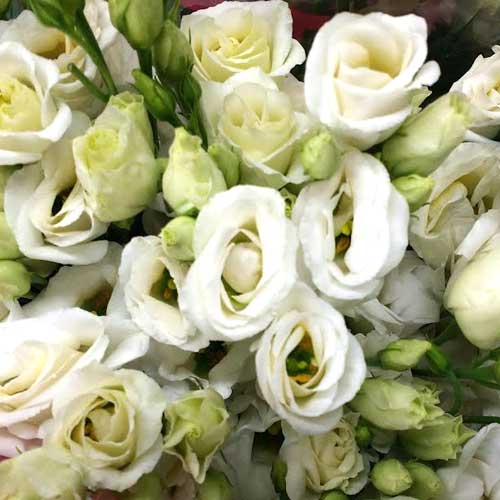
Lisianthus is a delicate, multi-layered flower with petals that resemble ruffled silk. The flowers come in shades of pink, purple, blue, and white.
Despite their fragile appearance, these blooms are known for their durability and excellent vase life, making them a top choice for corsages and boutonnieres.
While some designers don’t like lisianthus flower buds, including them adds an interesting touch to both a corsage and a boutonniere, in my opinion.
Why I Like and Use These Flowers for Wrist Corsages
When it comes to flowers, fillers, and foliage that can be used in wrist corsages, there are many other flowers I like that I could have included on this list, but I felt simple is better.
So I chose to focus on reasonably priced, on-trend flowers that are readily available in small quantities, mix and match well, and are easy to work with, no matter your skill level.
These flowers provide a good starting point for designing wrist corsages using cold glue, as well as other wearable floral jewelry. No matter your color palette, season, or style, these flowers will help to create the perfect wrist corsage for your event.
Frequently Asked Questions
How long will a wrist corsage last?
A properly constructed wrist corsage typically lasts 6-8 hours when worn. To extend its life, store it in a refrigerator at around 40°F (4°C) before the event, and avoid exposing it to extreme temperatures.
What’s the best way to attach flowers to a wrist corsage?
Cold floral glue is the most reliable method for attaching flowers to a corsage bracelet. It provides strong adhesion without the complexity of traditional wiring methods and dries clearly, ensuring a professional finish.
How much should I expect to pay for a wrist corsage?
Wrist corsages typically range from $25 to $45, depending on flower choice, seasonality, and location. Custom designs or premium flowers may increase the price to $60 or more.
When should I order a wrist corsage?
Place your order at least two weeks before the event to ensure the availability of your preferred flowers. Ordering 3-4 weeks in advance is recommended during the peak prom and wedding season.
Want More Tips Like This?
If so, enter your email address, and I’ll let you know whenever I add or update something here.
You can also stay updated or contribute your thoughts by following me on social media, where I’m always happy to continue the conversation.
Til next time,


